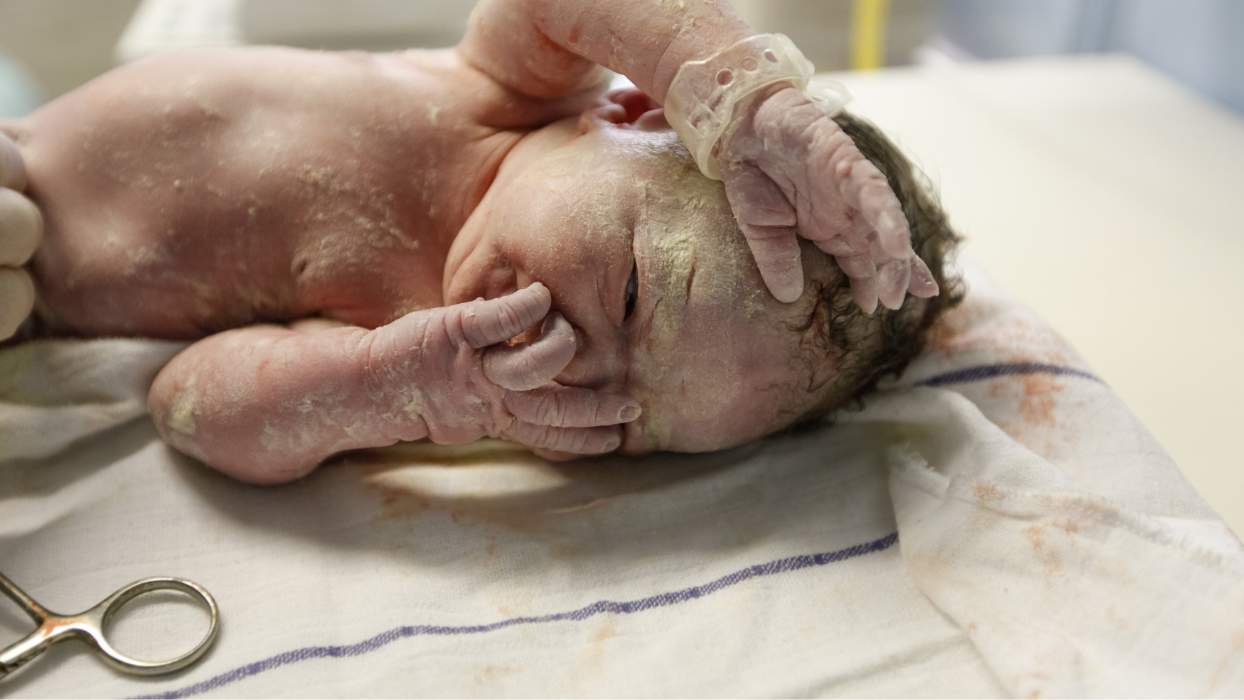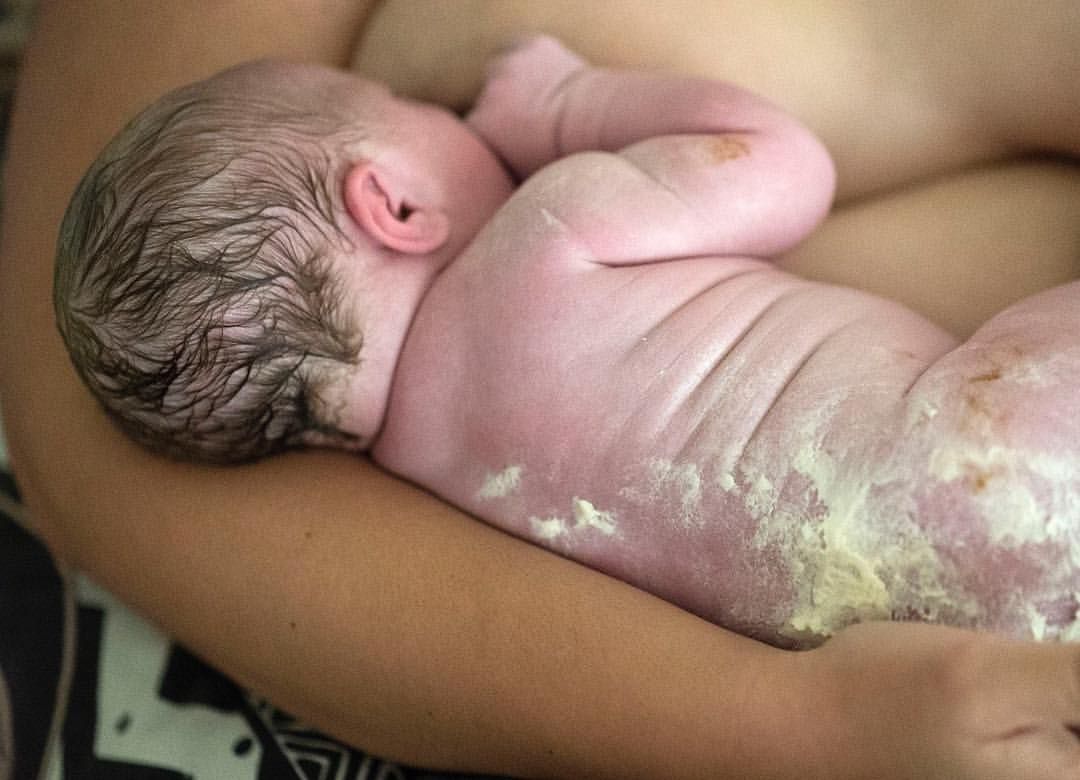What Is Vernix And Why Does It Matter?

Most newborns are covered with a white, greasy, cheese-like substance when they are born. This is called “vernix caseosa”. Though it may look yucky, vernix has several benefits for your baby. Let’s take a look at what exactly is the vernix and why it is important.
What Is Vernix?

source: canva.com
Vernix is a unique substance found only in humans. Also known as “birthing custard,” it coats the skin of newborns. The Latin term ‘vernix caseosa’ translates to “varnish” and “cheesy.” Vernix consists of a mixture of secretions from the sebaceous gland and skin cells.

How Is Vernix Produced?
Starting around the 20th week of gestation, periderm cells begin to shed and are replaced by the outermost layer of the epidermis. This shed skin mixes with sebum produced by the sebaceous glands, resulting in the formation of vernix. This substance then coats the baby’s body and aids in the development of the “stratum corneum,” the skin’s outer layer.
What Does Vernix Do?
The purpose of vernix is to protect your baby against the acidic amniotic fluid in the womb. Vernix helps to hydrate a baby’s skin, insulate the body, and aids in maintaining proper and comfortable temperature while your baby is still inside your womb.

Vernix protects your baby from excess sound as it forms a layer over the ears. So even though your baby can hear you from about 25 weeks, the sound will be muffled.
After your baby is born, vernix protects your baby’s skin by retaining moisture and keeping away infections. Vernix helps your baby to latch on as well as the scent of the vernix triggers neural connections in the brain that are required for breastfeeding.
Vernix also helps during birth as it acts as a lubricant and helps your baby to slide out more easily. It also promotes perineal wound healing in cases of vaginal birth.
How Long Should Vernix Stay?
Many moms ask the question, “Should I remove vernix right away?” WHO recommends that you should leave the vernix on your baby for a minimum of six hours and preferably up to 24 hours. There is no official recommendation or set time when you have to bathe your baby, do what makes you comfortable.

There are no side effects of leaving the vernix on your baby after he or she is born. However, there are certain exceptions. Babies who are born with staining or chorioamnionitis should be bathed immediately after delivery to prevent bacterial infections. Also, babies who are born to HIV-positive moms or hepatitis-positive moms should be bathed immediately to reduce disease transmission. Under normal circumstances, you can leave the vernix on your baby for as long as you like.
Today, many hospitals are delaying the bath time of newborns. This is because they realize the importance of the vernix and try to leave it on the skin for a longer period. This also allows moms to spend more skin-to-skin and breastfeeding time with their babies. If you have decided to delay your baby’s bath time, let the nurses in the hospital know.

Though the vernix looks unsightly, it protects your baby while they are still in the womb and has plenty of benefits. Leave it on your baby for a couple of hours or a day to get the most out of it. When you are satisfied, you can bathe your baby after a couple of hours or a day.
What Does It Mean When A Baby Has A Lot Of Vernix?
If your baby is born with a substantial amount of vernix, it’s often a sign that the baby arrived before the estimated due date. A thicker layer of vernix serves multiple roles: it acts as a natural barrier against infection, helps maintain skin hydration, and even aids in thermoregulation, keeping the baby’s body temperature stable both in the womb and during the initial hours after birth. This extra vernix can be particularly beneficial for preterm babies, who may require additional protection as their immune systems and skin are still developing.
Why Didn’t My Baby Have A Lot Of Vernix?
If you notice that your baby has little to no vernix at birth, it’s often because the baby was born closer to or after the estimated due date. By the 40th week of pregnancy, much of the vernix has been absorbed into the amniotic fluid or may even be ingested by the baby as they practice swallowing in the womb. While it might initially seem concerning, a lack of vernix is generally not a cause for alarm. It’s worth noting that vernix production varies from baby to baby, and some babies naturally produce less. If you have specific concerns, it’s always best to consult with healthcare professionals for personalized advice.
Conclusion
Vernix caseosa, commonly known as vernix, plays a crucial role in protecting and nourishing your baby before and after birth. Whether your baby has a lot of vernix or just a little, it’s a natural and beneficial substance that serves multiple functions. From aiding in skin hydration to acting as a natural lubricant during birth, vernix is more than just a “cheesy” substance—it’s a marvel of human biology.
If you have any questions or concerns about vernix, it’s always best to consult with healthcare professionals for personalized advice. Remember, each baby is unique, and what’s normal for one may not be for another.